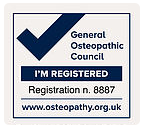From Back Pain to running a PB – effective Gluteals are an important factor
If you suffer from back pain , even infrequently, or you’re aiming for a personal best for your next race or training harder for your chosen sport whether it be running, rugby, football, tennis, swimming, cycling, skiing or golf.. the strength and effectiveness of your Gluteals will be a factor.
Where are your Gluteals and why are they important?
They attach to the Iliac crests of your pelvis and to the sacrum. From there it attaches to the posterior aspect of the head of the femur. Gluteus Max (Glut Max) main role is to extend our leg, effectively pulling the leg backwards and propelling us forwards whether walking or running. They also have a role in our posture keeping us upright. Preventing our pelvis from tilting forward. In this respect they have to work with our Hip Flexors and primarily our Psoas (see Psoas Blog).
 This diagram shows how the two groups of muscles work together- anterior and posterior to keep our pelvis balanced. So any exercises must work on both rather than one group exclusively.
This diagram shows how the two groups of muscles work together- anterior and posterior to keep our pelvis balanced. So any exercises must work on both rather than one group exclusively.
Most frequently I see patients whose Psoas and anterior postural muscles are tight and shorter and their Gluteals are under active causing a net tilt forward of the pelvis. Why? We spend most of our time sitting down at our desks, commuting, eating, watching TV, riding a bike so the muscles that want to make us bend at the waste are always working.
Conversely our Gluteals are longer and slightly stretched and under used in this position for long periods of time.
3 Reasons why should you care?
- With a pelvis that now has a reduced range of movement we get compensation with over work in our lower back postural muscles. Joints can become compressed. Inflammation can occur in muscles and joints resulting in back pain.
- If you are running and you want get faster you want to make sure that your Gluteals (Glut Max) is working at its most effective to help propel you forward at speed. It won’t if it is permanently on a stretch.
- Another factor in speed is the length of your stride. This will be shorter if your Psoas is tight and short.
Therapeutic exercises that can help
Here are two exercises that should be done consecutively to address tight Psoas to help lengthen and reduce tightness and followed by an exercise to strengthen Gluteals and Hamstrings through eccentric loading. Do the Psoas/hip flexor stretch first x 10 then the Gluteals x 10. Do morning and evening and as part of any warm up or Gym session.
If at any time you experience pain doing these exercises then stop. These should be pain free.
If you are already experiencing back pain or have an existing injury then consult your Osteopath or Physical Therapist before attempting them.
Want to Learn More?
Addressing imbalances in these muscles can help reduce the risk of future training related injuries or future back pain. Contact Hugo Firth Osteopath and Sports Rehab Specialist if you currently have back pain or you are recovering from a sports related injury. Hugo’s unique blend of Osteopathy and Functional Exercise therapy is really effective for patients , reducing pain increasing mobility and providing patients with strategies to reduce the incidence of it recurring.


